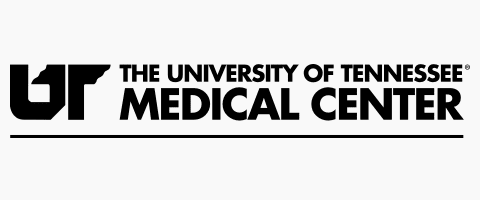One Hospital's Clear Choice For a Provider Data Management Upgrade
CUSTOMER PROFILE

The University of Tennessee Medical Center is located in Knoxville, Tennessee, was founded more than 60 years ago, and it is the regions's academic medical center.
SPECIALIZED AREAS OF HEALTH CARE: Women and infants, brain and spine, cancer, emergency and trauma, heart/lung/vascular, orthopedics
LICENSED BEDS: 609
PROVIDERS: 1,000 in 61 specialties
KEY CHALLENGES
-
Time required to follow up on incomplete applications (35% of total received) slowed turnaround
-
Paper-based, manual systems are less secure, require physical space
-
Time-consuming manual license monitoring ties up staff
SOLUTION
The Cactus Provider Management Platform plus the Application Manager, License Monitor, Provider Lookup, and Affiliation Letters modules.
BENEFITS
-
50 to 75% better application turnaround times, 75% less time handling applications because 85% are complete upon receipt (up from 65%)
-
Paperless digital systems are secure, don’t require floor space
-
Automated license monitoring frees staff for value-added tasks
At The University of Tennessee Medical Center, the medical staff office knew it was time to optimize its provider management process and fully transition from a paper-based to a web-based system. After using specific Cactus capabilities for more than a decade, the medical center knew the Cactus Provider Management Platform and its various modules had the potential to do far more once they switched to the web-based version.
"As we considered the many advantages of being truly web-based and paperless, which offered everything from expedited processes and time saved to confidentiality and transparency, we fully committed to the web-based platform,” says Kerrie Harless, vice-president, Credentialing and Physician Services, University Physicians Association/The University of Tennessee Medical Center. “The fact it was incredibly user-friendly also made the decision to transition even easier.”
Because Cactus is highly automated and web-based, UT Medical Center staff spends less time chasing paper and the people behind it. This allows them to focus on their other tasks and take on additional responsibilities, which lets Harless devote more time and energy to managing her department.
“Cactus has become our bible – it’s at the heart of everything we do and our IT leader considers it our most vital piece of software,” says Harless. “The move was comparable to switching from an old-school flip cell phone to today’s top-of-the-line smartphone except that Cactus is incredibly user-friendly and dummy-proof even for people with very little computer knowledge.”
Using Application Manager has transformed the application process. Turnaround times have improved 50 to 75 percent because 85 percent of the applications received are complete, up from the historical 65 percent, and communication is web-based versus fax, phone and the U.S. mail. The staff spends 75 percent less time handling and processing applications than doing it manually with paper and legacy technology.
“These applications are always last on the providers’ and their administrative teams’ to-do list, so the easier we make it, the more likely they’ll get to it sooner and do what we need,” says Harless. “It’s easy, convenient, and guides the providers and their staff through the requirements.”
Because reminders are sent as milestones approach, deadlines are regularly met. Since UT Medical Center staff made certain application fields mandatory, applicants can’t scroll through to the next section until they are complete. Experience has also shown UT Medical Center staff that if a particular section is in red, applicants recognize it as mandatory.
“In Cactus, we can easily direct them to what they’ve missed and include notes and comments,” says Harless. “We’re also following up through Application Manager when an application is incomplete rather than depending on fax, the mail and phone calls, which saves time and money.”
Cactus Application Manager’s digital log-ins ensure the files are secure and confidential, while the tracking capabilities preserve their integrity and the paperless files eliminate the cost of additional storage space.
As much as staff had accepted the fact that committee reviews meant confidential files were sometimes on the move and out from behind locked doors, they had concerns. In addition, The UT Medical Center was running out of storage space for the 1,000+ providers’ respective files, each of which averaged about 200 sheets of paper, and paying for this non-revenue-generating space didn’t make good business sense.
To deepen its commitment to automated, paperless systems and maximize efficiency, UT Medical Center has shifted the routine license monitoring tasks to Cactus License Monitor. It automatically confirms license renewal status with the primary sources and uses Scheduler to email UT Medical Center’s customized reminder letters at pre-set times. Providers and their staff get the automated reminders — all they have to do is take the necessary action. When necessary, License Monitor will alert UT Medical Center staff to issues that require the human touch. Every month, staff saves four to five hours monitoring licenses, thanks to License Monitor.
“As a result of License Monitor, we have far fewer instances where providers are unable to work because their licenses have expired, and that’s good for everyone involved,” says Harless.
Provider LookUp, essentially a provider database and directory, is particularly useful during Joint Commission sessions. When the surveyor asks what Dr. Smith is privileged and credentialed to do, with a few clicks, Provider LookUp presents that information in a standard format.

“Provider LookUp is an enormous timesaver because everyone in the medical center can use it to see what privileges providers are approved for — the information is current, accurate and at our fingertips,” says Harless. “Before, they’d have to call us and ask us to look it up for them.”
During a 2017 Joint Commission Survey, UT Medical Center Medical Staff team had peace of mind knowing that Cactus had automatically updated all of its licenses and DEAs and that the data was easily shared with The Joint Commission.
“Next time we see The Joint Commission, UT Medical Center will be 100 percent paperless and everything they need to survey will be in Cactus,” says Harless.
To ensure buy-in from the top-down and the bottom-up, Harless recognized the onus was on her team to introduce the new system in a way that built trust and comfort. Because many of her medical team members were more comfortable with paper than the digital systems, Harless ran both the paper and Cactus systems simultaneously and embraced a very gradual transition with incremental changes.
Slipping in a few new Cactus components every year and testing Cactus components with small groups to earn acceptance and improve comfort levels before a broad rollout may require more time, but there is a pay-off.
“You want your staff and providers talking about how well it works and how easy it is to use — that’s worth the wait,” says Harless. “We knew Cactus would get the job done but had to let it prove itself to our medical staff over time.”
To fully leverage the power of the Cactus system and its various components, Harless highly recommends on-site training with Cactus and long-term access to its phone and web support. Cactus trainers know the product intimately and know how to teach regardless of the students’ computer literacy levels. As importantly, UT Medical Center staff aren’t being pulled away from their regular tasks to coach their peers, which takes two staff members off task rather than one.
“Be proactive and give your hospital and team the basic and in-depth, step-by-step knowledge and training they need to get everything possible from Cactus,” says Harless. “I can tell you from personal experience – it’s well worth it.”